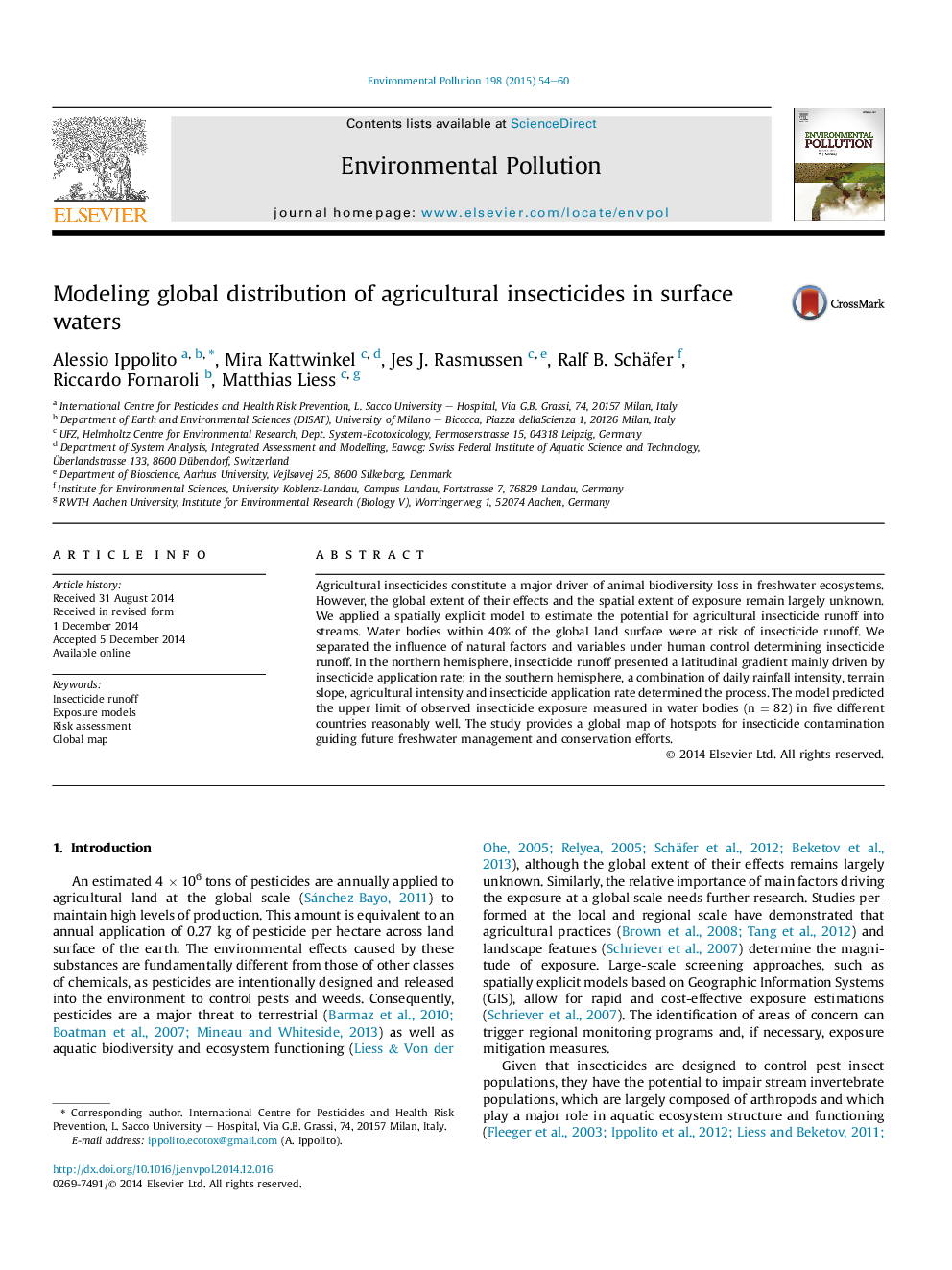| Article ID | Journal | Published Year | Pages | File Type |
|---|---|---|---|---|
| 6316988 | Environmental Pollution | 2015 | 7 Pages |
Abstract
Agricultural insecticides constitute a major driver of animal biodiversity loss in freshwater ecosystems. However, the global extent of their effects and the spatial extent of exposure remain largely unknown. We applied a spatially explicit model to estimate the potential for agricultural insecticide runoff into streams. Water bodies within 40% of the global land surface were at risk of insecticide runoff. We separated the influence of natural factors and variables under human control determining insecticide runoff. In the northern hemisphere, insecticide runoff presented a latitudinal gradient mainly driven by insecticide application rate; in the southern hemisphere, a combination of daily rainfall intensity, terrain slope, agricultural intensity and insecticide application rate determined the process. The model predicted the upper limit of observed insecticide exposure measured in water bodies (n = 82) in five different countries reasonably well. The study provides a global map of hotspots for insecticide contamination guiding future freshwater management and conservation efforts.
Related Topics
Life Sciences
Environmental Science
Environmental Chemistry
Authors
Alessio Ippolito, Mira Kattwinkel, Jes J. Rasmussen, Ralf B. Schäfer, Riccardo Fornaroli, Matthias Liess,
